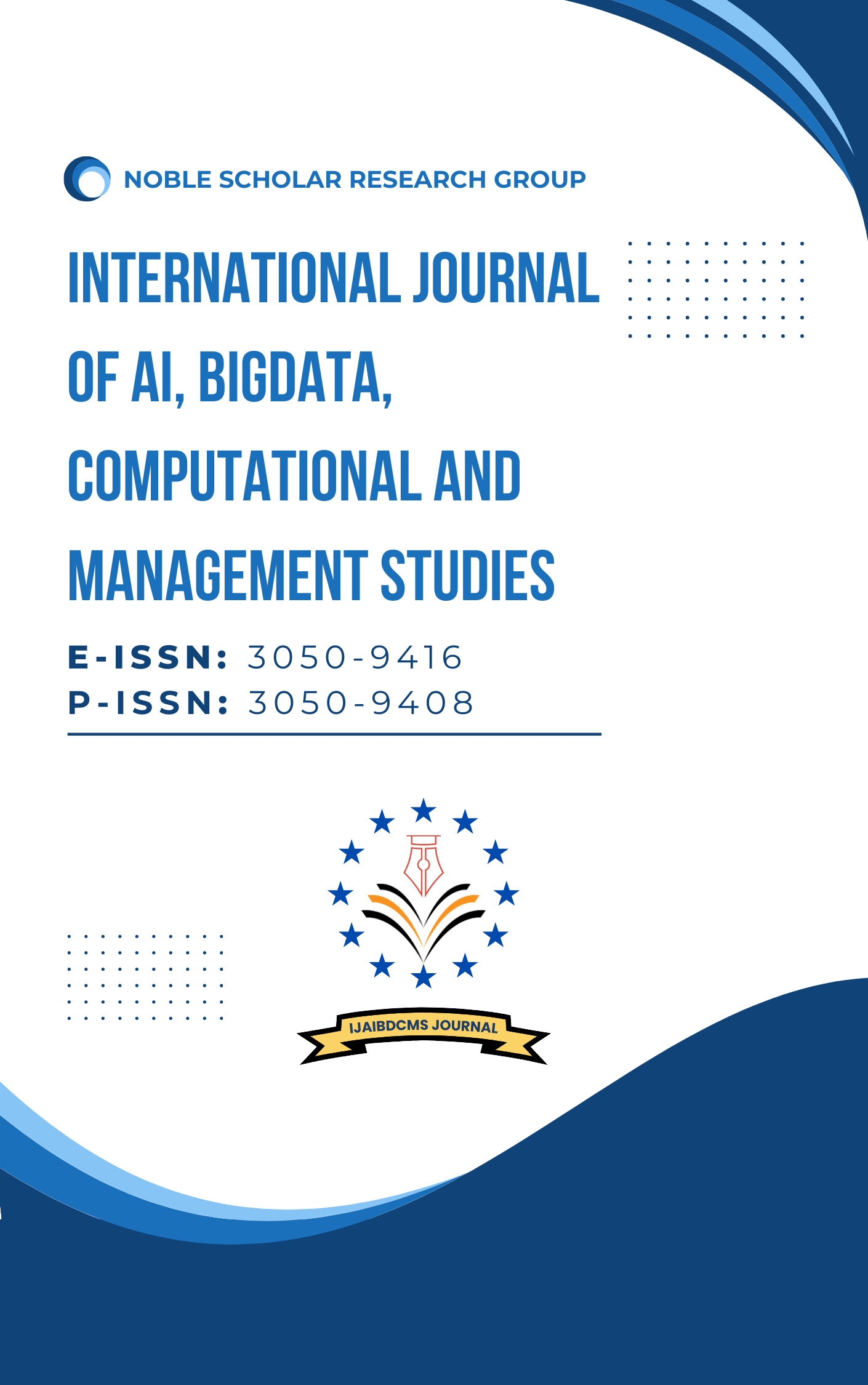Leverage Power BI Rest API for real time data synchronization
DOI:
https://doi.org/10.63282/3050-9416.IJAIBDCMS-V3I3P104Keywords:
Power BI REST API, Real-Time Data Synchronization, Power BI Integration, Data Refresh, Streaming Datasets, Live Dashboards, API Authentication, Automation, Business Intelligence, Power BI Embedded, Power BI Service, DirectQuery, Import Mode, Push Datasets, Azure AD Authentication, OAuth 2.0, Data Gateway, Webhooks, Row-Level Security (RLS), Scheduled Refresh, Incremental Data Refresh, Power Automate Integration, Embedded Analytics, Custom Visuals, DAX Queries, Paginated Reports, Report Embedding in Web Apps, Power BI with Azure Synapse, Power BI with Databricks, Monitoring & Alerts, Data Governance, Performance Optimization, Power BI API Rate LimitsAbstract
By means of interactive dashboards and reports, Power BI has evolved into a potent business intelligence (BI) solution helping companies to transform unprocessable data into valuable insights. Power BI's ability to connect with real-time data sources is a big benefit since it lets companies base their judgments on the most recent data. Real-time data synchronizing is fundamental in dynamic reporting and analytics; especially in sectors where timely insights promote operational efficiency, customer happiness, and competitive advantage. Firm performance in financial transactions, IoT sensor data, live inventory control, or elsewhere can be much impacted by quick data refreshing. Real-time data changes enabled by programmatic interactions with Power BI datasets, reports, and dashboards depend totally on the Power BI REST API. Companies may promise faultless data syncing by automating data refresh procedures, straight inserting fresh data inputs into Power BI, and using the API to schedule updates in response to outside events. A case study demonstrating the actual Power BI REST API usage for live data updates will be provided in this paper. Overcoming obstacles including authentication, API rate constraints, and data input complexity, the case study will explain how a company effectively combined real-time data flows into Power BI. Eventually, real-time syncing throughout the Power BI REST API gives companies access to current data, therefore improving operational efficiency and decision-making capability. Organizations may build more agile and data-driven initiatives and hence improve business outcomes by automating data changes and smoothly linking with real-world data sources
References
1. Powell, Brett. Mastering Microsoft Power BI: Expert techniques for effective data analytics and business intelligence. Packt Publishing Ltd, 2018.
2. Prosper, James. "Real-Time Data Processing in Sales Pipelines: Challenges and Best Practices." (2021).
3. Donselaar, V. L. Low latency asynchronous database synchronization and data transformation using the replication log. MS thesis. University of Twente, 2015.
4. Ellis, Byron. Real-time analytics: Techniques to analyze and visualize streaming data. John Wiley & Sons, 2014.
5. Atluri, Anusha. “Leveraging Oracle HCM REST APIs for Real-Time Data Sync in Tech Organizations”. Essex Journal of AI Ethics and Responsible Innovation, vol. 1, Nov. 2021, pp. 226-4
6. Knight, Devin, et al. Microsoft Power BI Complete Reference: Bring your data to life with the powerful features of Microsoft Power BI. Packt Publishing Ltd, 2018.
7. Deckler, Greg. Learn Power BI: A beginner's guide to developing interactive business intelligence solutions using Microsoft Power BI. Packt Publishing Ltd, 2019.
8. Ferrari, Alberto, and Marco Russo. Introducing Microsoft Power BI. Microsoft Press, 2016.
9. Kupunarapu, Sujith Kumar. "AI-Enhanced Rail Network Optimization: Dynamic Route Planning and Traffic Flow Management." International Journal of Science And Engineering 7.3 (2021): 87-95.
10. Familiar, Bob, and Jeff Barnes. "Business in Real-Time Using Azure IoT and Cortana Intelligence Suite." Apress: Berkeley, CA, USA (2017).
11. Vasanta Kumar Tarra, and Arun Kumar Mittapelly. “Future of AI & Blockchain in Insurance CRM”. JOURNAL OF RECENT TRENDS IN COMPUTER SCIENCE AND ENGINEERING ( JRTCSE), vol. 10, no. 1, Mar. 2022, pp. 60-77
12. Bulusu, Lakshman. Open source data warehousing and business intelligence. CRC Press, 2012.
13. Ali Asghar Mehdi Syed, and Shujat Ali. “Evolution of Backup and Disaster Recovery Solutions in Cloud Computing: Trends, Challenges, and Future Directions”. JOURNAL OF RECENT TRENDS IN COMPUTER SCIENCE AND ENGINEERING ( JRTCSE), vol. 9, no. 2, Sept. 2021, pp. 56-71
14. Saxena, Shilpi, and Saurabh Gupta. Practical real-time data processing and analytics: distributed computing and event processing using Apache Spark, Flink, Storm, and Kafka. Packt Publishing Ltd, 2017.
15. Familiar, Bob, et al. "Data visualizations, alerts, and notifications with power BI." Business in Real-Time Using Azure IoT and Cortana Intelligence Suite: Driving Your Digital Transformation (2017): 397-473.
16. Wingerath, Wolfram, Norbert Ritter, and Felix Gessert. Real-Time & Stream Data Management: Push-Based Data in Research & Practice. Springer, 2019.
17. Atluri, Anusha. “Insights from Large-Scale Oracle HCM Implementations: Key Learnings and Success Strategies ”. Los Angeles Journal of Intelligent Systems and Pattern Recognition, vol. 1, Dec. 2021, pp. 171-89
18. George, Juliana. "Real-Time Data Synchronization in Java and AngularJS Application Using WebSockets." (2021).
19. Ali Asghar Mehdi Syed. “Automating Active Directory Management With Ansible: Case Studies and Efficiency Analysis”. JOURNAL OF RECENT TRENDS IN COMPUTER SCIENCE AND ENGINEERING ( JRTCSE), vol. 10, no. 1, May 2022, pp. 104-21
20. Rad, Reza, Rad, and Gennick. Pro Power BI Architecture. Apress, 2018.
21. Pérez, Juan Luis, et al. "A resilient and distributed near real-time traffic forecasting application for Fog computing environments." Future Generation Computer Systems 87 (2018): 198-212.



